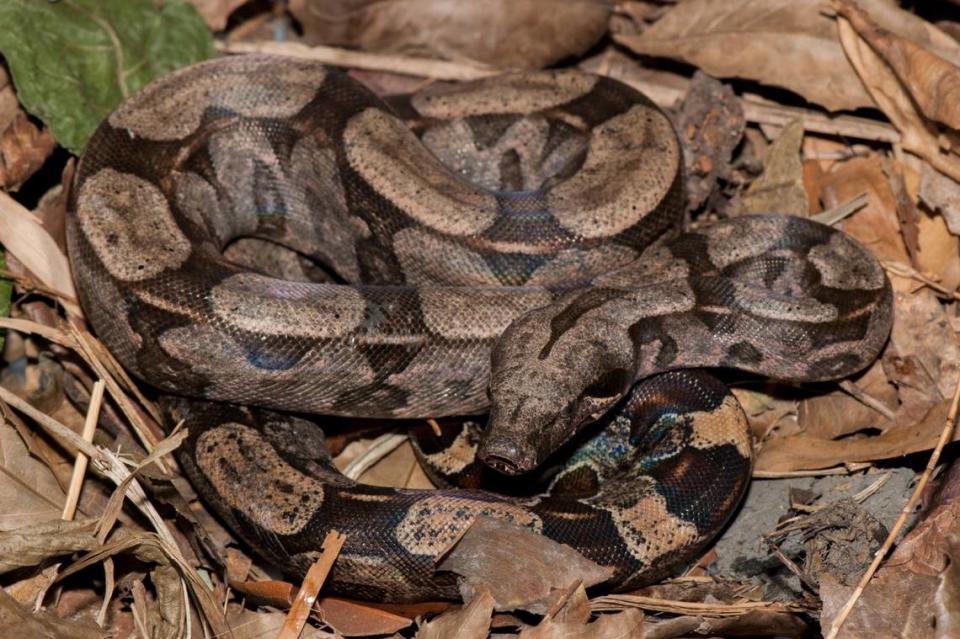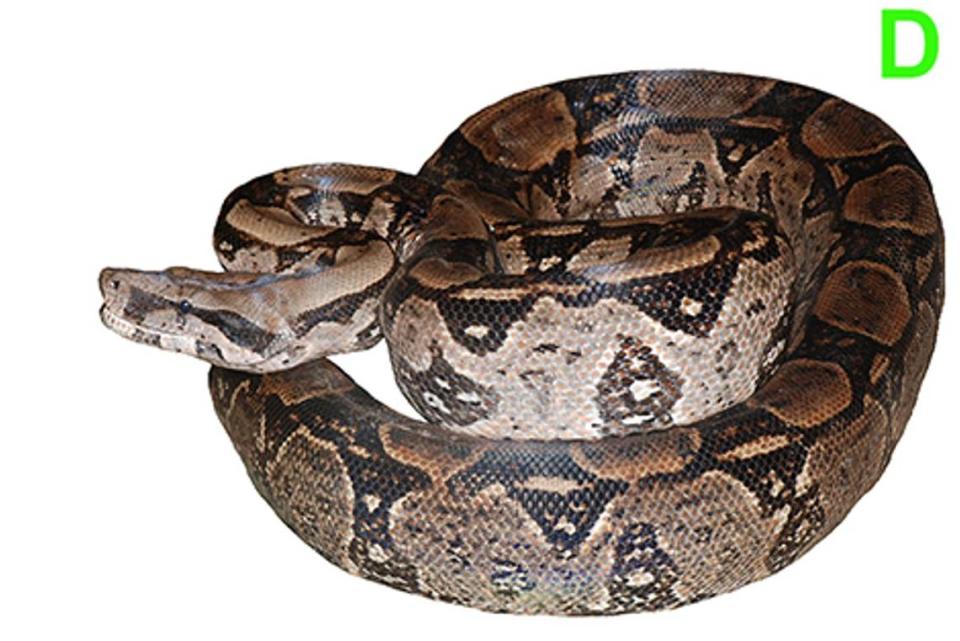7-foot boa constrictor found mating on tree in Brazil — and discovered as new species
Boa constrictors are a fairly well-known group of non-venomous snakes that occupy a unique place in pop culture. Their massive size and primary attack method — squeezing their prey to death — makes them memorable, to say the least.
Despite being common enough to be pets, boa constrictors in South America have not been studied on a large scale.
A group of researchers decided to change that, according to a study published April 17 in the peer-reviewed journal Plos One. Researchers started analyzing the DNA and physical features of boa constrictors in South America and noticed that snakes from the Brazilian coast didn’t fit in any existing species.
“By comparing Brazilian boas, I noticed that some had a different color pattern, with brownish spots near the tail,” study co-author Rodrigo Castellari Gonzalez told McClatchy News.
Researchers soon realized they’d discovered a new species: Boa atlantica, or the Atlantic Forest boa constrictor.

Discover more new species
Thousands of new species are found each year. Here are three of our most eye-catching stories from the past week.
→Volcanic ocean creature — with 'long' legs — discovered in Japan. It's a new species
→'Flat'-headed creature — with multicolored eyes — discovered as new species in China
→Nocturnal creature — a 'rapidly-running' predator — discovered as new species in India
Atlantic Forest boa constrictors can reach well over 7 feet in length, the study said. Their bodies are mainly brown with dozens of “saddle-shaped” black and brown markings down their backs. Photos show the new species curled up.
Atlantic Forest boa constrictors are “very common” along the eastern coast of Brazil, “even in large and populous cities,” researchers said. Two snakes were found mating in a tree in Rio de Janeiro. Other snakes were found in rainforests.
These boa constrictors were “known by scientists in the past 200 years” but seemed to go “widely ignored,” the study said. Researchers emphasized “the importance of paying attention to the most common species.”

Researchers said they named the new species after the Atlantic Forest region, a biodiversity hotspot, where it lives.
So far, Atlantic Forest boa constrictors have only been found in Brazil, including Rio de Janeiro State, Rio Grande do Norte State and Bahia State, the study said.
The new species was identified by its scale pattern, coloring, tail spots, genitalia and DNA, the study said. DNA analysis found the new species had between 3% and 9% genetic divergence from other boa constrictors.
The research team included Rodrigo Castellari Gonzalez, Lorena Corina Bezerra de Lima, Paulo Passos and Maria José Silva.
Clawed creature falls from tree and lands on scientist in Thailand. It’s a new species
Partly blind creature — with ‘powerful sting’ — found in Colombia. It’s a new species
Clawed creature — ‘speckled’ and ‘marbled’ — found off Spain coast. It’s a new species

